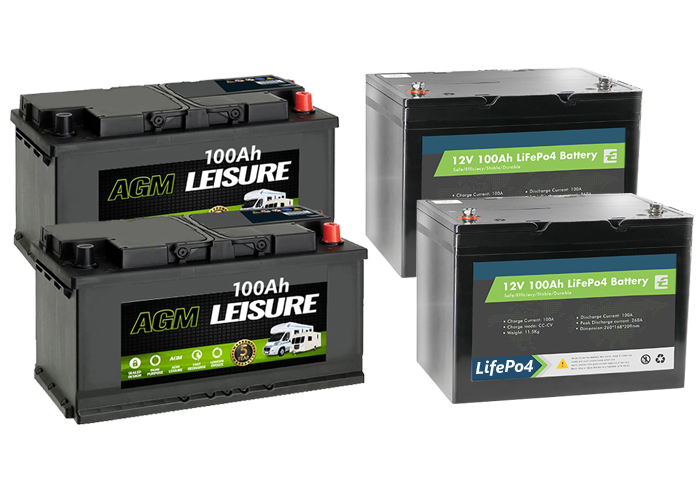
Its now time to upgrade the batteries in the vehicle. I had been using 2 X 100Ah AGM Batteries the manufacturer claims they can be discharged by 80% which sounds great when compared to Lead Acid as I would have 80Ah X 2 (160Ah) of useable power, but I didn’t, all is not what it seems, I will explain below (see Peukert’s Law futher down this page).
I wanted to upgrade to Lithium here are a few Positives and Negatives
Lithium Positives
- A “like for like” Lithium battery will have more useable power that Lead Acid or AGM.
- The Life cycles of Lithium (Life of the battery) is much longer, probably as long as the vehicle.
- Lithium batteries are much lighter
Lithium Negatives
- Lithium Batteries cost a lot more to buy
- Unlike Lead Acid Lithium Batteries fail suddenly when depleted (Lead Acid – your lights will fail gradually with Lithium they suddenly stop working).
Useable Power Comparison
- 100Ah Lead Acid – 50Ah usable power
- 100Ah AGM Acid – 50Ah usable power although the manufacturer of my battery claims up to 80%
- 100Ah Lithium – 80Ah – 90Ah usable power
Life Cycles (rough guide as other factors will affect the cycles)
- 100Ah Lead Acid (deep charge) up to 200 life cycles before it starts to decline
- Lithium 1,000 to 10,000 cycles
Should I buy Lithium-Ion or should I buy lithium iron phosphate?
Lithium-Ion OR Lithium Iron Phosphate? (Courtesy of epec / Anton Beck)
- Highest energy density: lithium-ion
- Good energy density and lifecycle: lithium iron phosphate
- Stable chemical and thermal chemistry: lithium iron phosphate
- No thermal runaway and safe when fully charged: lithium iron phosphate
- Portability and lightweight characteristics: lithium-ion
- Long life: lithium iron phosphate and lithium-ion
- Low costs: lithium iron phosphate
Peukert’s Law; what the AGM Battery suppliers don’t mention.
When I bought my two 100Ah AGM batteries (200Ah in total) the manufacturer stated that they could be discharged down to 80%, I thought this meant I had 160Ah of useable power, but I didn’t.
Lets assume I have 1 X 200Ah AGM battery, the battery will produce 200Ah over a constant period of 20 Hours. Simply put, the battery was designed to discharge at the rate of 10 Amps for 20 Hours. Amps (10) times Hours (20) equals Amp Hours (200).
Since everyone sees battery capacity as somewhat likened to water in a glass, one might want to think that the A·h capacity of a battery would remain constant while the Time and Discharge rate remained connected in a linear fashion. This is not the case.
Given this same battery under a load of 20A you would think that it would operate for 10 Hours, but it will not, it will operate for only 8.1 Hours. The resulting Ah rating falls to 162.5Ah. An apparent loss of 37.5 Ah or 18.75%. This is the effect of Peukert’s law on this particular battery chemistry and structure.
